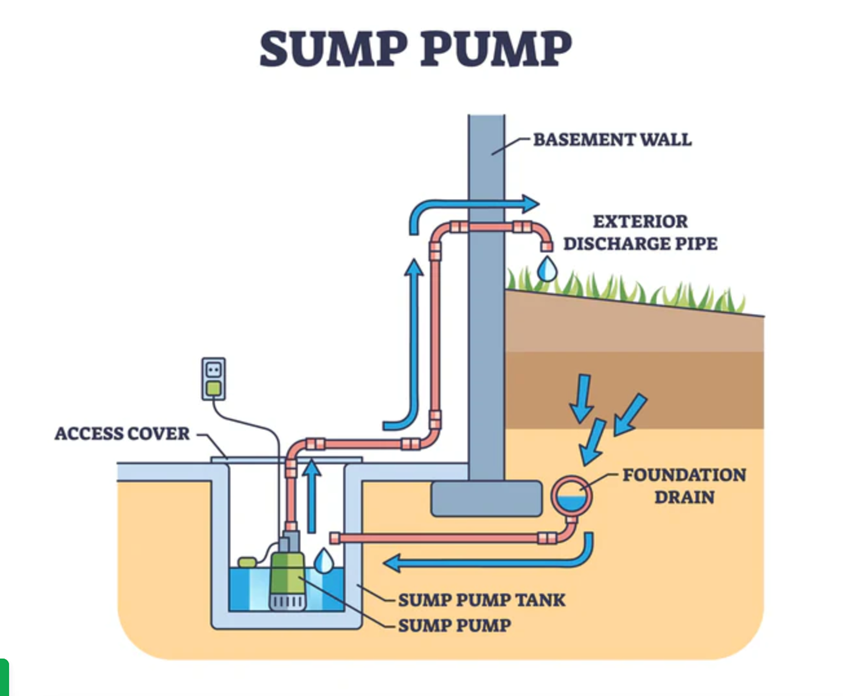Waterproofing & Sump Pumps: Protect Your Basement from Flooding
At DAI Restore, we understand the stress and damage that flooding can cause to homeowners and business owners, especially when it affects the basement. Since basements are often below ground level, they’re more susceptible to water infiltration from both external and internal sources. However, with the right strategies, you can significantly reduce the risk of flooding and protect your property.
In this blog, we’ll cover essential tips for waterproofing your basement, how to maintain a sump pump, and how to prepare for flooding conditions.
Waterproofing Your Basement: The First Line of Defense
Waterproofing your basement is one of the most effective ways to prevent water from flooding your property. It’s especially important if you live in an area that experiences heavy rainfall or has a high water table. Waterproofing doesn’t just protect your basement from flooding; it also helps prevent mold growth, musty odors, and structural damage caused by moisture.
Here are a few key methods to waterproof your basement:
- Seal Foundation Cracks: Over time, cracks can develop in the foundation due to shifting soil or settling. These cracks provide an easy entry point for water. Sealing the cracks with a high-quality epoxy or hydraulic cement can help prevent water from seeping in.
- Install a Vapor Barrier: A vapor barrier is a plastic sheeting material installed on walls and floors to prevent moisture from seeping through. This is especially useful for unfinished basements and areas that experience high humidity.
- Improve Exterior Drainage: Ensure that the ground around your property is graded away from the foundation to help direct water in the opposite direction. Another step would be to clean gutters and downspouts, and ensure they are clear of debris to prevent water from pooling near the foundation.
- Waterproof Coatings for Walls: There are various waterproof paints and sealants available that can be applied to the interior walls of your basement. These create a protective barrier that stops water from coming through the walls.
Sump Pump: Keep It Maintained
A sump pump is another crucial components in protecting your basement from flooding. Installed in the lowest part of your basement, it automatically activates when water levels rise by pumping water out of your home. However, like any mechanical device, it requires regular maintenance to ensure it’s effective when needed the most.
Here are some essential sump pump maintenance tips:
- Test Your Sump Pump Regularly: At least once a month, slowly pour water into the sump pit to make sure the pump activates and drains the water properly. This simple test can help you catch any issues early before a major storm hits. If it doesn’t work properly, contact someone to repair it immediately.
- Clean the Pump and Pit: Over time, dirt, debris, and sludge can accumulate in the pit, potentially clogging the pump or preventing it from working efficiently. Clean the sump pump and pit often to keep it functioning properly.
- Check the Discharge Pipe: Ensure that the discharge pipe is not clogged or frozen. The water needs to be able to flow freely away from your property, so make sure the pipe is clear and directing water away from your foundation.
- Replace the Battery Backup: Many sump pumps come with a battery backup to ensure that they work during power outages. Test the backup battery regularly, and replace it when needed to keep your system reliable.
 Photo credit: Fresh Water Systems
Photo credit: Fresh Water Systems
Preparing for Floods: Protect Your Property
The best time to prepare for a flood is before it happens. Even if you’ve already taken steps like waterproofing your basement and maintaining your sump pump, there are other actions you can take to protect your property from water damage.
- Elevate Valuable Items: Keep valuable items such as electronics, documents, and furniture off the floor, especially in areas prone to flooding. Consider installing shelves or cabinets to protect them or putting them in a waterproof safe.
- Flood-Proof Entryways: Install flood barriers or door seals at entry points like basement windows and exterior doors. These barriers can help prevent water from entering your property during heavy rains.
- Understand How Flooding Can Occur: Knowing how water can enter your home or business and what steps to take to prevent it from infiltrating is key to preventing damage, mold, or suspended daily operations.
- Get Flood Insurance: If you live in a flood-prone area, consider purchasing flood insurance to help cover the cost of repairs in the case of water damage.
- Know Your Options: If the inside of your home or business does get damaged from water, call DAI Restore to help. We restore various types of carpets, tile, or upholstery back to their original state, as well as perform document restoration and mold remediation from secondary damage.
Contact us immediately if you suspect water damage or recurring mold damage in your home or business.
Don’t wait for the next storm to catch you off guard; start preparing today to protect your home or business today. Follow DAI on social media for more tips.